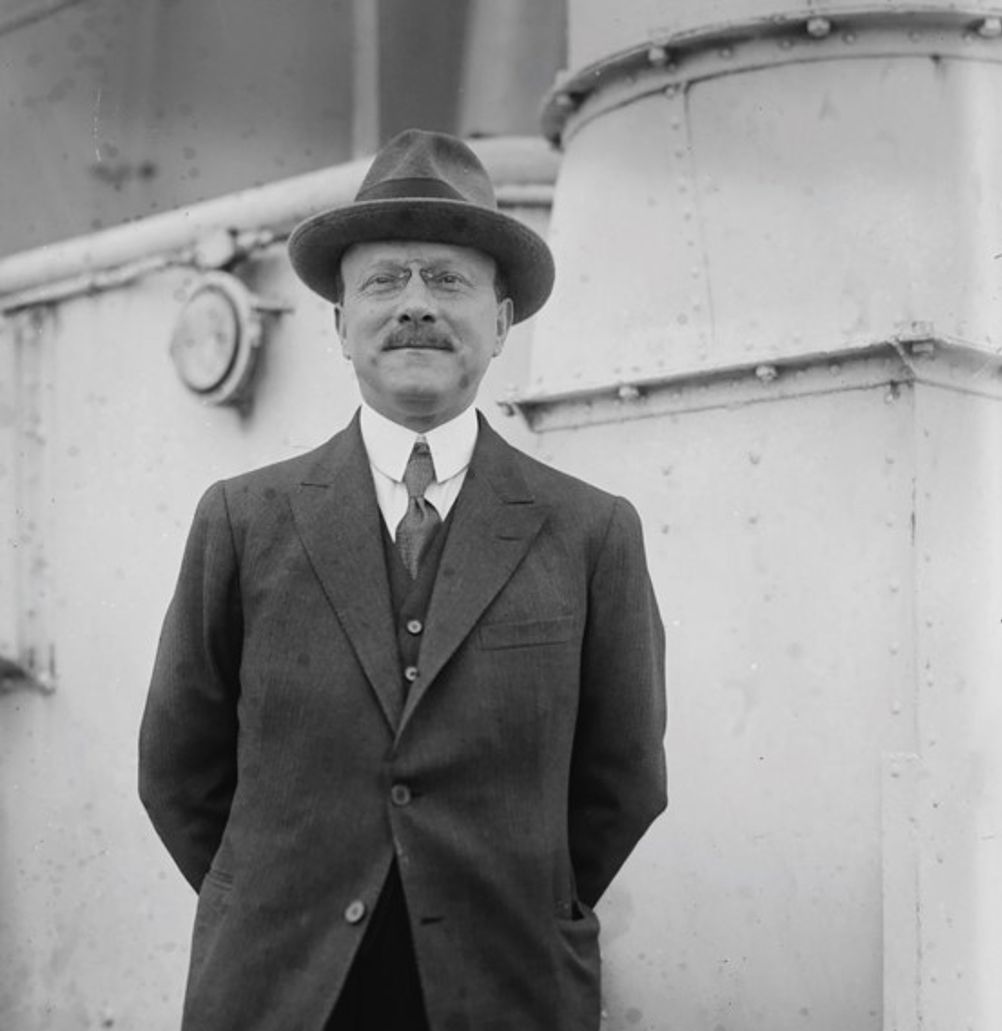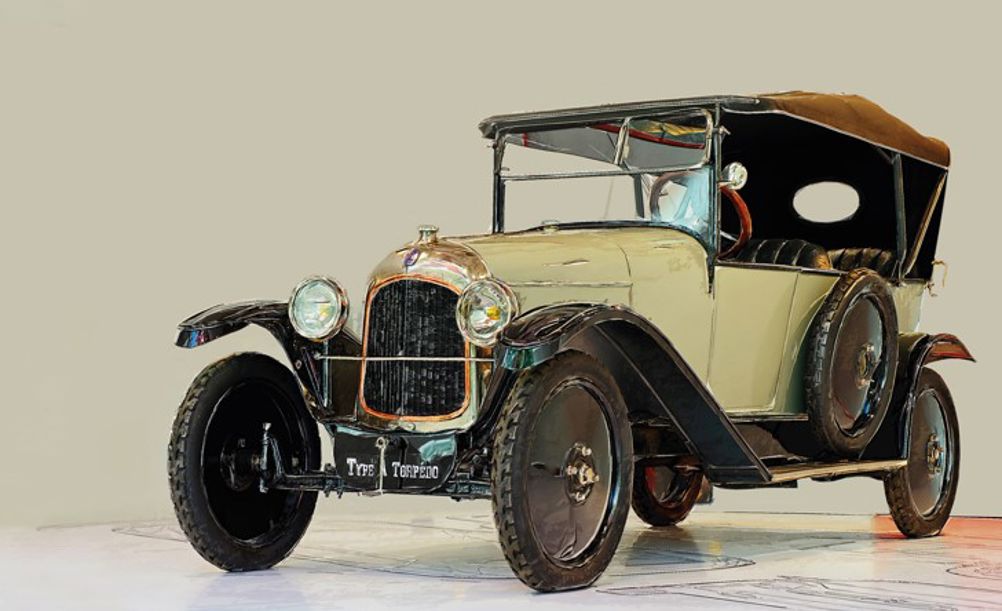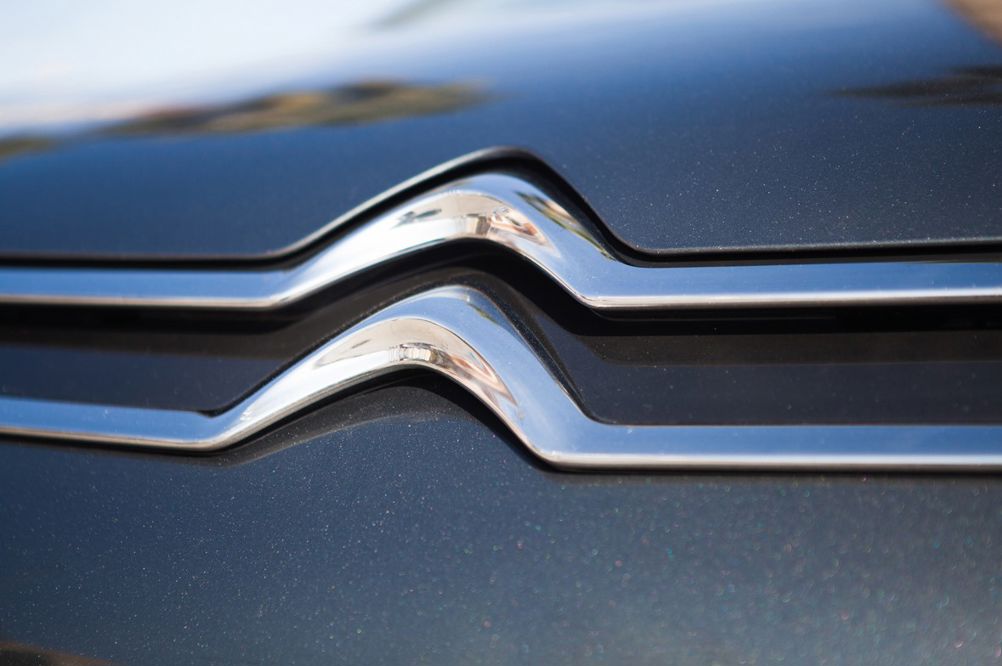
His citation in the Automotive Hall of Fame describes André Citroën’s car manufacturing achievements as ‘numerous and varied’. After the Great War he introduced American-style mass production methods to France with the 10-horsepower Type A. He delivered the world’s first unibody front-wheel drive car – the Traction Avant model – that would be in production for 23 years with a run of three-quarters of a million units. He built tracked cars that could be driven on any terrain. He restructured the entire taxi fleet of his capital city Paris and organised a rapid coach transportation network in the suburbs and towns. He also ‘charmed the hearts of children by reproducing his cars as toys.’ Although often described as France’s Ford, the brand Citroën created became a household name in its own right.
Born in Paris in 1878, André-Gustave Citroen (without the diacritic over the ‘e’ in his surname) was the fifth and last child of Jewish parents, Masza Amelia Kleinman and diamond merchant Levie Citroen (whose unsuccessful speculations in South Africa would lead to his suicide when André was six years old). Descended from Dutch fruit merchants, the family name derives from Limoenman (or ‘lime man’), later changed to Citroen (meaning ‘lemon’). For reasons that aren’t entirely clear, one of the young André’s school teachers added the tréma (or two dots) to his surname, changing both how it was written and pronounced. This may or may not have been significant to a young boy obsessed with the works of Jules Verne and construction of the Eiffel Tower that he was to see at the 1889 Exposition Universelle. Most biographers refer to these two factors as being the main catalysts for André’s determination to become an engineer.
I, Citroën, want to provide every Frenchman...with cars
Having graduated with a diploma in engineering from the École Polytechnique (159th out of 200 students), in 1900 he travelled to Poland where he witnessed a carpenter working on a set of wooden herringbone gears that had been used for centuries in the region on watermills. As only one Russian company was known to be able to cut such gears in steel, Citroën saw his opportunity and for a small sum transferred the patent to his own name before founding the gear-cutting business Engrenages Citroën. It is still common to read of Citroën as credited with the invention of double helical gears: a misconception most probably brought about by the fact that the engineer used the distinctive pattern as the basis of the double chevron Citroën branding still used as the maker’s bonnet badge.
By 1905, Citroën was joined in his venture with André Boas and Jacques Hinstin, with the new company renamed Hinstin Freres Citroën & Cie: its main objective being to sell double helical gears into the automotive industry. As the French automobile industry was in a rapid growth phase, requirement for gears was high and Citroën quickly realised that to achieve low prices on short turnaround he needed to mass produce components. As he invested in state-of-the-art machinery and introduced flow control management processes, his gears found their way into most French cars (as well as the steering system on the doomed RMS Titanic), and were at one time evaluated for use by Rolls-Royce.

By 1908 Citroën’s involvement with the automobile industry had progressed to the point where he had risen from being an unknown engineer to chairman of the ailing French car manufacturer Mors: a progression no doubt assisted by the fact that his brother was married to the daughter of a high-ranking Mors executive. Citroën rescued the company from obscurity after travelling to the USA in 1912 where he inspected Henry Ford’s River Rouge plant in Detroit. He was impressed by Ford constructing complete automobiles on a single floor with abundant space and light. This was in stark contrast to Mors, which built cars in diverse departments. Citroën would later take over, close and repurpose the Mors facilities to build his own vehicles.
Before he could expand his influence on the automotive landscape, the outbreak of the First World War meant that his talents were required in the production of armaments. Serving in the 82nd heavy artillery regiment as a lieutenant in the early days of the conflict, he was traumatised by the death in combat of his brother Bernard and his brother-in-law Max Bingen. Having witnessed first-hand the dire human consequences brought about by ammunition shortages, Citroën created a business plan to mass produce munitions on the same principles as he had made gears. The proposal was submitted via an old school friend Louis Loucher, eventually reaching the French Army’s Chief of Artillery, General Baquet – a fellow graduate of the École Polytechnique – who accepted the plan without hesitation.
The French Ministry of Armaments provided Citroën with the capital to buy thirty acres on the Quai de Javel in Paris to construct a massive factory complex, along with modern machinery imported from the USA. According to Citroën’s 1935 obituary published by the Jewish Telegraphic Agency: ‘During the War he was in charge of the great arsenal at Roanne, which turned out some 55,000 shells per day. His organising ability and inventive genius contributed greatly to the victory of the allied forces.’
After the 1918 Armistice Citroën would become ‘one of the most dramatic figures in French industry’, founding the eponymous company S.A. André Citroën that would by the 1930s emerge as the fourth largest automotive enterprise in the world. Within four months of the end of the war, the Quai de Javel factory had been converted to car manufacture, and the following year the Type A was put into production and launched with a massive media fanfare in which full-page advertisements announced the arrival of ‘Europe’s first mass-production’ car.
The website Citroënët explains how he set about ‘building motor cars at his Javel works… and within a year was manufacturing 100 cars per day. In addition to employing mass production, he also supplied cars that were ready to drive from the factory gates, cars that were fitted with bodies (the norm was for the manufacturer to supply a chassis on which a coachbuilder would construct a body built to the client’s specification), lights, wheels and tyres. Furthermore, he created a dealer network across France that serviced his vehicles, and he provided road signs for the French road network.’ Citroënët also notes that the French engineer was a paternalistic employer who provided his workers with for the time ground-breaking benefits such as medical and dental facilities, gym and crèche.

During the 1920s Citroën and his auto manufacturing concern would experience a meteoric rise, followed by an equally dramatic fall in fortune as the global economic downturn of the Great Depression ushered in the 1930s. Despite the success of the Traction Avant, according to Hemmings Motor News, ‘Citroën’s finances were stretched to the breaking point, which wasn’t aided by the fact that he was a heavy gambler. Citroën lost enormous personal funds, and apparently began to dip into the company’s finances as well.’
Meanwhile the organisation was haemorrhaging cash on advertising – including illuminating the Eiffel Tower with Citroën’s name in lights – and setting up factories in Belgium, Britain, Germany and Italy in order to avoid punitive import charges on his products. He also invested heavily in printing owner’s manuals and spare parts catalogues, eventually leading to Citroën creating his own publishing company André Citroën Editions. The Surrey Vintage Vehicle Society delves deeper into the extent to which Citroën was commercially over-reaching: ‘Other specialist offshoots followed including the first finance company in France specifically to finance purchase of automobiles, and a company specifically set up to provide motor insurance. In addition Citroën commenced manufacture of model cars, mainly for publicity. But this too turned into an industry manufacturing over three million toy cars.’
‘Eventually, Citroën was unable to pay its bills,’ continues Hemmings, with the result that one of the company’s largest creditors Édouard Michelin – who had supplied tyres to Citroën – was asked to take over the running of the company. Citroën was forced to retire from the business that bore his name.
In 1931, the French government awarded Citroën the badge of Grand Officier of the Legion of Honor for exceptional service to the cause of civilisation and world progress. As the Jewish Telegraphic Agency explains, following the collapse of his business Citroën became ‘ill for many months with a cancer in the stomach. This and his grief over the recent loss of a daughter, brought about his end.’ André Citroën died in Paris on 3 July 1935 and was buried in Montparnasse Cemetery in a service led by the Chief Rabbi of Paris.










Breaking the 15MW Barrier with Next-Gen Wind Turbines
Hi Martin, a wind turbine blade functions very much like an airplane wing in a climb. Obviously in one case the air is moving and the other the air is...